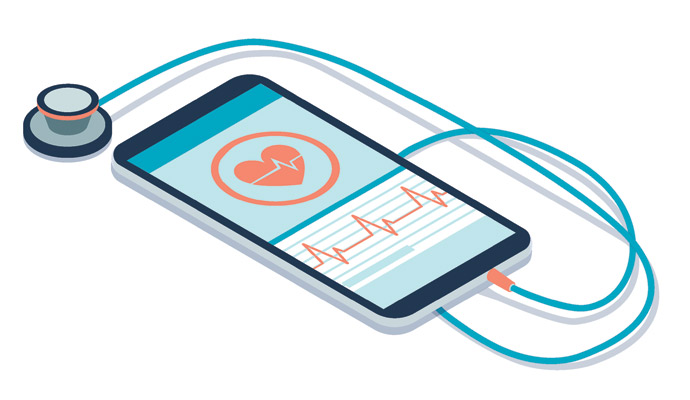Industry Stakeholders Say Telehealth Is Key to COVID-19 Response
Telehealth is helping overcome many common challenges organizations face in battling the coronavirus outbreak, according to a recent Insights by Xtelligent Healthcare Media survey.

Source: Getty Images
- Telehealth is playing a critical role in the healthcare industry’s response to COVID-19. The technology is helping a variety of organizations overcome some of the pandemic’s most common challenges.
(For more coronavirus updates, visit our resource page, updated twice daily by Xtelligent Healthcare Media.)
In fact, telehealth is helping organizations respond to a limited supply of personal protective equipment (PPE), increased patient flow, increased demands for testing, and the worried well, according to a recent Insights by Xtelligent Healthcare Media survey.
Stakeholders from hospitals, health systems, primary care physician offices, specialist offices, federally qualified health centers, and accountable care organizations provided insight into their coronavirus response strategies. The goal of the survey was to understand how the industry was responding to the pandemic and share strategies for overcoming some of its most common challenges.
Results reveal telehealth’s critical role in fighting COVID-19.
Sixty-three percent of all respondents are using telemedicine to overcome PPE shortages. Virtual triage through a telehealth visit means only the sickest of patients are brought into the hospital or clinic. So providers are seeing fewer patients on-site and do not need to change their PPE as frequently.
Telehealth is also helping organizations respond to an increased demand for patient visits. Whether it be video or audio visits, providers can see patients virtually rather than asking them to come into the office.
Not only does this help ensure provider safety by limiting the number of patients they interact with, but it also lowers patients’ risk of contracting COVID-19 too. Provider and patient risk of exposure is lowered when patients do not have to come into the office or hospital.
Video or audio visits are also typically faster, so providers can see more patients in a shorter amount of time. So it is no surprise that 63 percent of respondents are using telemedicine to manage patient visits.
Telehealth is also critical for managing the worried well, or those who give no indication they need testing or treatment for COVID-19 but are concerned they might have contracted the disease.
Rather than coming into the hospital or clinic and potentially exposing themselves to COVID-19, patients can speak to a provider through a videoconference or over the phone. Sixty-six percent of the industry leaders report using telehealth as a strategy for managing the worried well.
A quick call with their provider can reassure patients they are healthy and safe. This is also an ideal opportunity for providers to remind patients about effective preventive measures patients can take to keep themselves and their families safe.
Telehealth’s role in the coronavirus response is indisputable. It is helping organizations respond to an increased number of patients, sick or not, and helping keep their workforce safe.
But if these programs are to continue to succeed, organizations need a strong infrastructure to support these systems. They will need the ability to update interfaces and continuously educate patients and providers about telehealth capabilities.
Organizations also need support from regulatory bodies and payers to reimburse these visits. Many telehealth laws have been relaxed in response to COVID-19, but leaders are wondering if these laws will remain in place after the pandemic.
While the industry must continue fighting the pandemic, considering the future implications of these technologies will remain important. Leaders throughout the industry must continue to collaborate in order to share strategies and best practices for an effective coronavirus response as information and technology is evolving daily. And learning from one another will help ensure a more effective response to future public health events.
The Healthcare Industry's Response to COVID-19 survey results also highlight payer and provider preparedness for the COVID-19 outbreak, payer coverage for coronavirus testing and treatment, and strategies for overcoming common challenges to the COVID-19 pandemic. The report can be found here.
